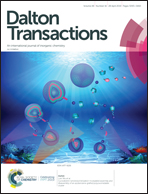From corannulene to larger carbon bowls: are they better for multiple metal encapsulation?
Abstract
Carbon bowls having two distinctly different faces, convex and concave, represent a unique class of non-planar π-ligands with defined molecular compositions and structures. The smallest π-bowl called corannulene is known to exhibit the record alkali metal ion binding abilities upon multi-electron acquisition. In contrast, the potential of larger carbon bowls with extended π-surfaces in self-assembly with multiple metal ions is yet to be revealed. This Frontier article opens a discussion of the effect of size, charge and symmetry of the bowl-shaped π-ligands on their supramolecular assembly and metal ion intercalation trends.

- This article is part of the themed collection: 2019 Frontier and Perspective articles


 Please wait while we load your content...
Please wait while we load your content...